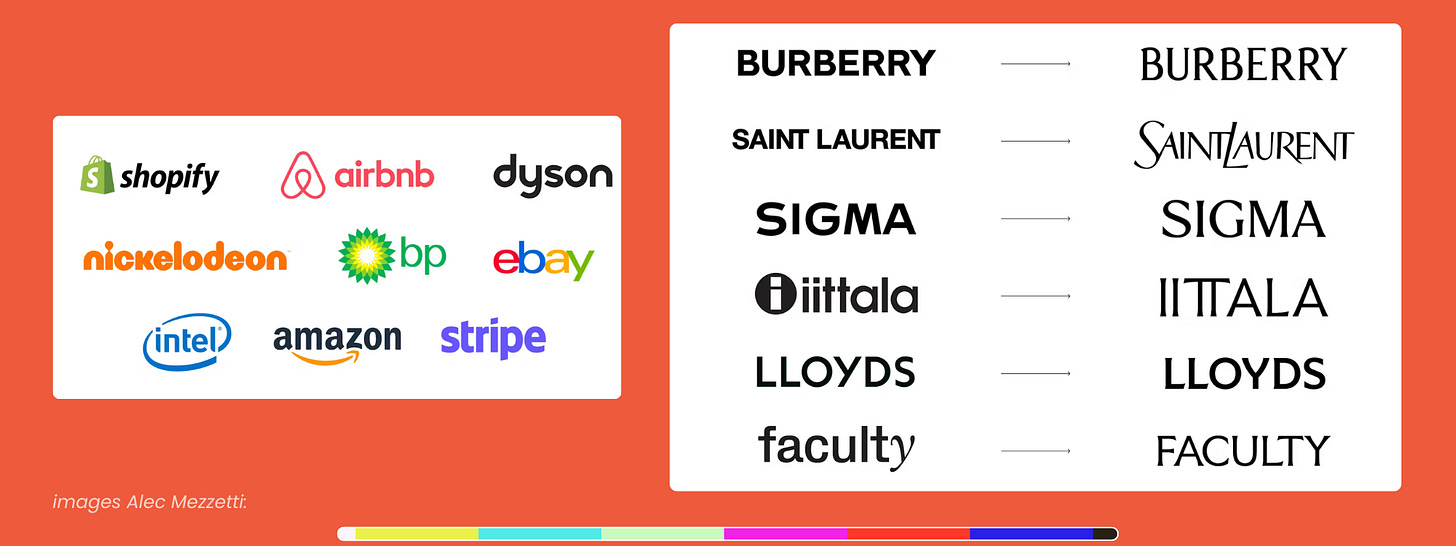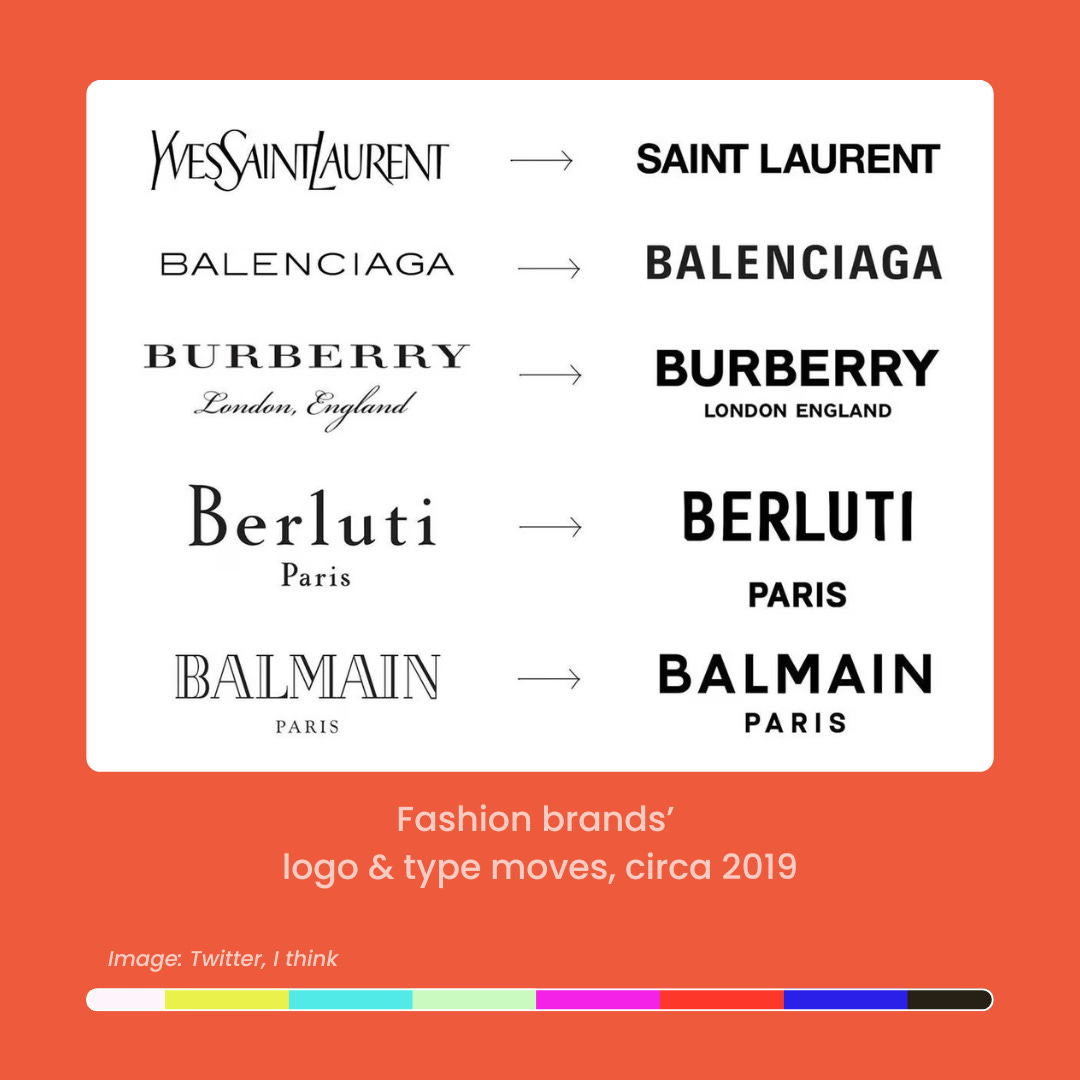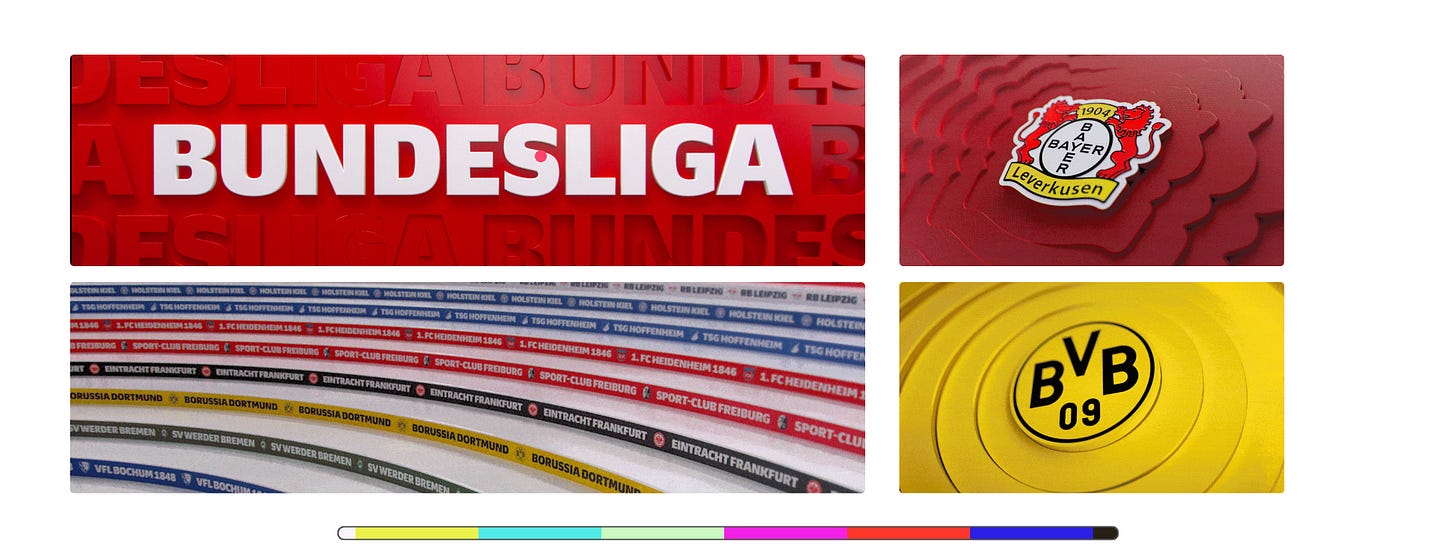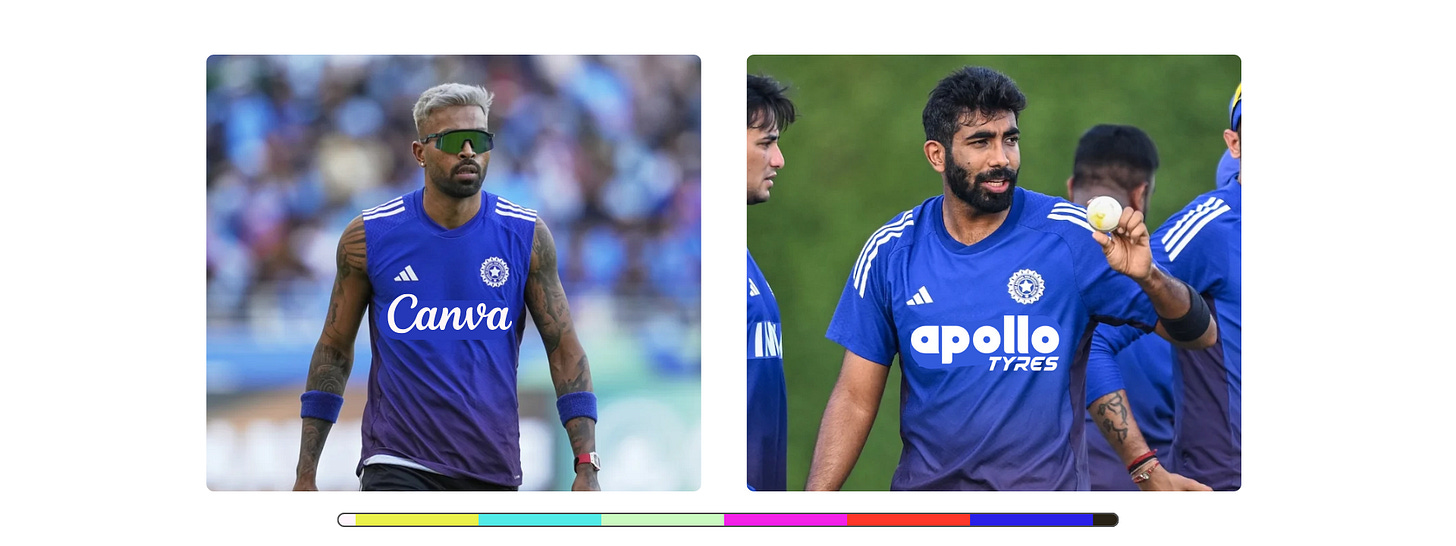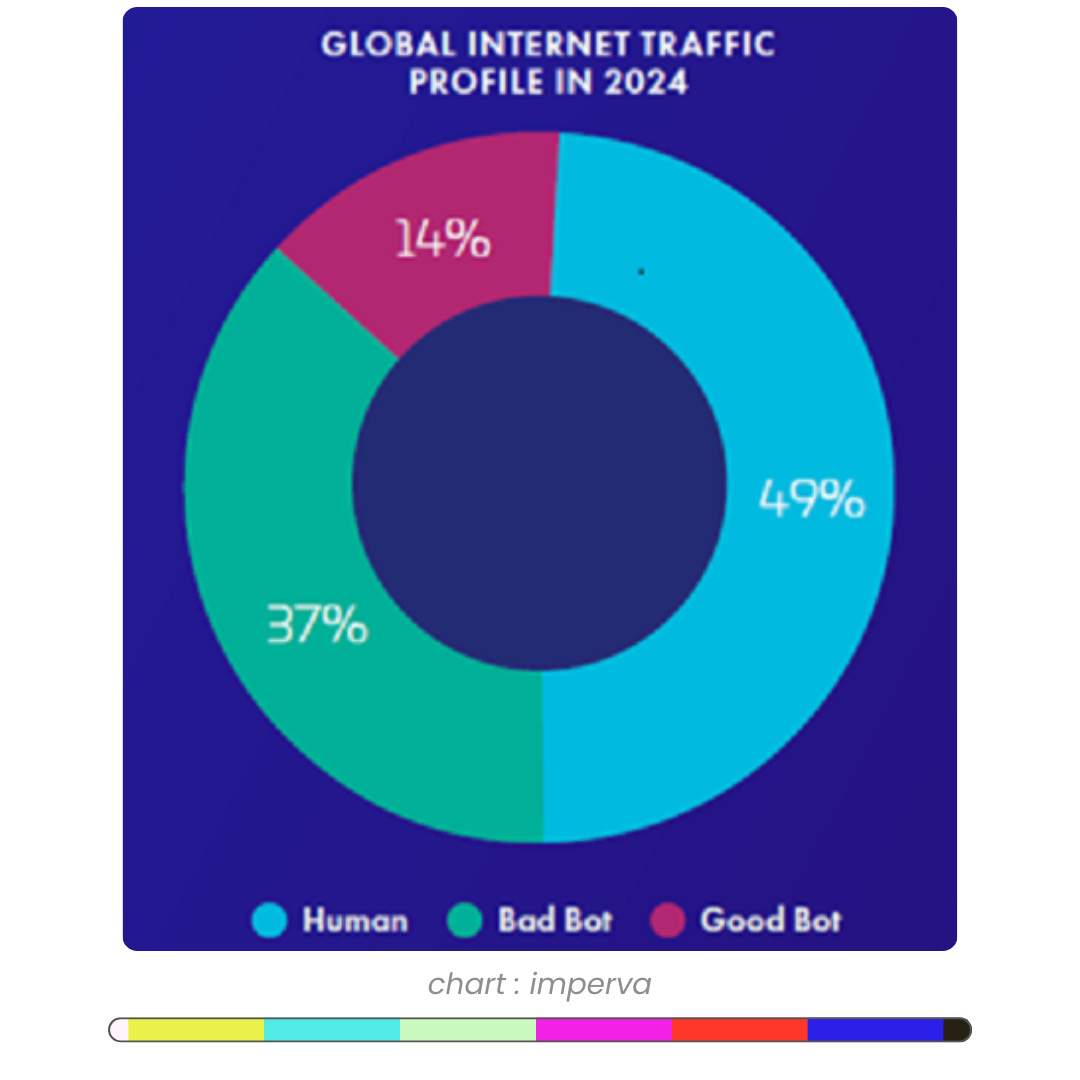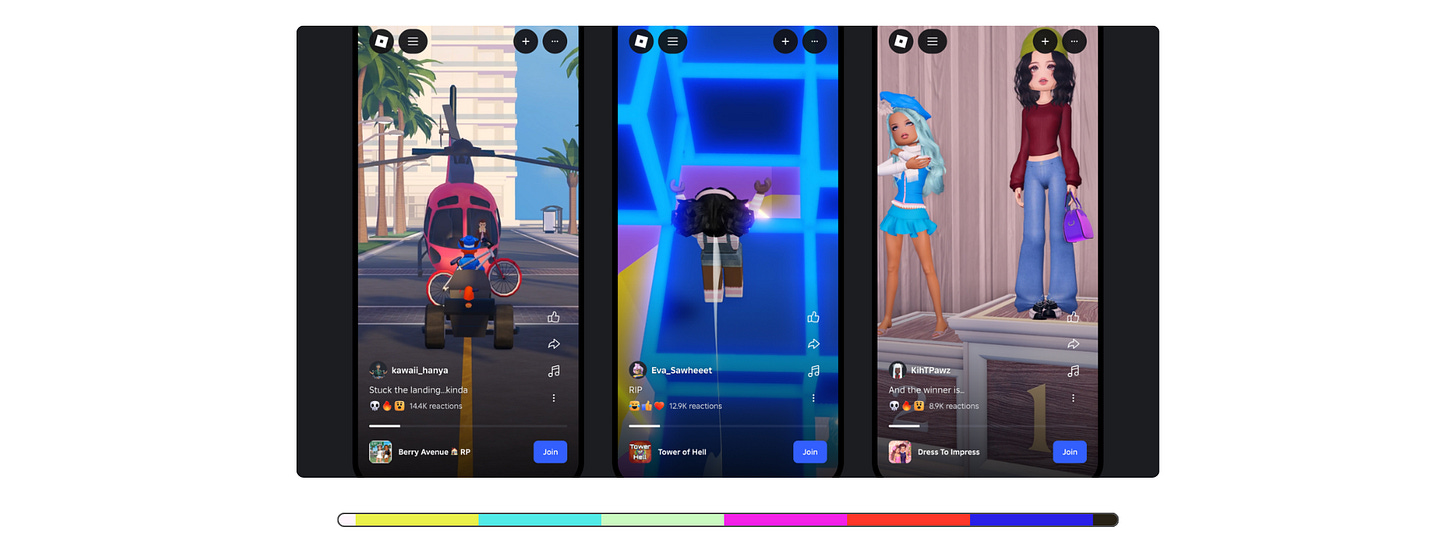Formality, fonts, picnics & play
· friendly fonts · creator ratings · a British tableau · action Lego · Canva cricket ·
This week with some formal & friendly fonts, picnics & play.
🎧 Prefer to listen? Hit play above to listen to me read this week’s dispatch.
Formality & Friendliness: an absorbing arc of branding approaches in the 21st century.
Curated/Cuts: A lush British tableau, the Bundesliga rebrand, Lego’s blockbuster.
Canvas for Cricket: A suprise runner-up in the sponsorship bid for the Indian cricket team.
Creator Lists: Favikon’s report on the most influential creators of 2025
+ Singapore gets some MotoGP love, how Ellison’s ambitions with WarnerBros might look for Asia, AI content taking over the internet, and Roblox’s turn to get a doomscroll feed.
The Colour Bar- a weekly collision of creativity, branding, pop culture & tech.
Formality, Friendliness & Fonts
Do you think about serif vs sans serif? Or how a casual work aesthetic spread to corporate branding? Or how an erosion of trust led to brands softening their image?
Well, if you are reading this newsletter, maybe you do. Sometimes.
Me? I have never been able to let go of a soft spot for serifs and a hint of ‘style’ they can bring, even though I admit to very much riding the wave of sans serif boldness. I often find myself wading in combined waters, looking to make the two co-exist in my worlds that don’t abandon ‘friendliness’, nor entirely embrace formality or being staid.
In ‘Is formality returning in branding?’, Alec Mezzetti traces an absorbing arc of branding approaches in the 21st century, suggesting that we have reached a time where the casual, friendly nature of corporate brands is ready to be replaced by the aura of something older, with more weight.
Steve Jobs’ turtleneck, Mark Zuckerberg’s hoodie, and Google’s colourful beanbag chairs were more than just aesthetic choices – they represented an ideological opposition to establishment business culture.
It moves across the boom of technology, the 2008 crash, institutional mistrust, politicians, the pandemic, NFTs, AI, moral virtue, venture capital, and much else. If this seems like an unlikely cast of players, it is not, and the piece will show you why.
In looking for an answer the article header posits, he wonders, “The early signs of this counter-revolution can be seen across the world of branding and advertising, where friendly colours, hyper-legible text and digital optimisation are starting to make way for richer tones, serifs and a de-prioritisation of digital scalability.”
Homogeneity, however useful and efficient, will almost always cede ground, once creativity starts to look like groupthink. So you could argue this is inevitable; but it is the integration with societal movements that makes such analyses interesting.
Contrast this with a 2019 piece that felt “The Revolution Will Not be Serifised”.
Times have changed?
Mezzetti finishes with, “In a landscape of homogenous, casualised branding, widespread disillusion with the idealism that birthed it, and a growing sense of insecurity, these old codes hold power.”
🎬 Curated/Cuts.
1. A very British tableau
John Lewis, the British retailer is celebrating its centenary. Known for its sweeping Holiday season commercials, this late summer drop, ‘Tableau’ is a visual stunner- the breadth, vision and joy is quite the sight.
From the brand teams’s Amy Tippen-Smith, "100 people. 100 products. 100 seconds. 100 years of Never Knowingly Undersold. All shot at 100 fps. What a way to celebrate!"
Directed by Kim Gehrig, whose work is consistently brilliant (Sydney Opera House Play it Safe, Nike Winning, Apple Greatest…)
2. Bundesliga Rebrand
Bundesliga’s global rebrand for 2025 dropped recently, and their reel is great showcase of all they have reimagined, keeping at the centre of it all the player + ball + stadium.
The branding agency NXTid has a little showcase too.
The approach centred on an expansive ‘wave’- representing kinetic energy (striking the ball) and acoustic energy (the roar of a stadium). As a result , the iconic player is also ‘set free’ from the logo’s rectangle, if only temporarily.
3. Lego wants to keep playing
Tom Holland and his dopellgangers show up for Lego and the message is “Never Stop Playing”.
Its a fun spot, expectedly and happily vibrant and action-packed and full of lego magic… but somehow feel like it misses a bit of soul, feels plastic. I like Tom Holland, I like the brand, I love the message- just wish it had resonated more at an emotional level.
A Cricket Canvas
The Indian cricket team has a new shirt sponsor.
What made me stop and take a beat? Reading that the second highest bidder at approx $63m… was Canva. The design and creative tool that everyone uses, millions love (and some designers love to hate!)
Canva is an Aussie company with a great success story including that of founder Melanie Perkins. A suite of tools for design and social media sold with a subscription, it is arguably in most creators and marketers’ backpack.
I’d expect their focus on India would be growing (if I’m not mistaken their key markets outside US are Indonesia and Brazil, maybe a couple of others). These are young, booming creator economies, primed for tools like Canva.
All to say I was pretty surprised to see it had bid.
This doesn’t mean I think it’s a bad idea; in fact, I can see how Canva would get incredible mileage from a deal like this, probably more meaningful than what the winner Apollo tyres will.
Also made me wonder- given how prominent the branding is, I wonder which the fans would have taken to more- the Canva XI or now the Apollo Tyres XI?
➕ Some quick hits:
Paramount, Warner, media sagas. You’d have certainly seen that David Ellison is keeping his foot on the media empire pedal. Now, looking to potentially buy Warner Bros Discovery (ahead of their own proposed split.) Patrick Frater has a good analysis here, with an Asian lens added on. (Though I don’t see the tech giants plonking down cash for a company with cable networks). One does tend to agree that whatever the outcome, its hard to see it having a significant impact on Asia as a whole; though of course corporate reorgs are never pretty from a human standpoint. Elsewhere, Lucas Shaw sounds more sceptical.
Singapore will host MotoGP’s 2026 season launch in February; it takes over from Bangkok, which showcased the motorsport’s first global launch earlier this year.
For the first time, bot generated content makes up more of the internet than human. So says a recent report focusing on ‘bad bot’ action and security risks. But gives us another reason to pause and consider: how much of what we encounter online is actually from humans. Additionally, how much of the ‘good bot’ content in this chart is actually slop, in the form of Linkedin posts, twitter threads and generated articles that string together intelligent thoughts and phrases in happily hollow chambers of predictability?
Roblox announced a ‘TikTok-like’ short video feed for sharing gameplay moments. “Roblox Moments” will allow users to capture, edit and share their gameplay clips in a scrollable feed.
Creator Lists!
I finally got a chance to look Favikon’s report on the most influential creators of 2025 (Favikon is a creator economy platform for brands and influencers). It landed around when TIME released a similar list of ‘Top 100’ creators. Whether by design or chance, it serves as a reminder of how broad and multilingual the influence economy is. Most lists, like TIME’s, tilt toward U.S. or English-speaking names.
The creator ecosystem is, by nature, decentralised, but coverage around it mostly does not reflect that. Favikon takes a data-led view of who commands attention across the globe.
Few findings that stood out:
72% of the top creators are based outside the U.S.
Latin America contributes nearly 30% of the top 100. In line with that, Spanish and Portuguese represent a third; more than half don’t publish primarily in English.
Interesting, the average top creator is active on 3+ platforms. YouTube and Instagram seem near-universal, TikTok also dominant, LinkedIn appearing as a business layer.
Categories are diversifying beyond entertainment- think STEM, law, fitness, pets, and hyper-local niches. Creators are often subject matter experts with a robust business model, rather than just entertainers.
What the report captures well is the scale of these local ecosystems— creators in São Paulo, Mumbai, or Jakarta building loyal audiences in the tens of millions, rooted in their own languages and cultures. These robust scenes have always been there, but Favikon gives them some overdue recognition and visibility. As Pep Torres, a Spanish inventor and creative director put it:
“For too long, listings that say "world" when they really mean "US" have overlooked talent from around the world. Calling this out—and creating a meaningful, truly global list of creators—not only empowers us, but also helps us reclaim the self-respect we deserve from our place in the world.”
The picture is less clear, though, when it comes to cross-border reach. That isn’t a focus of the report and is presumably much harder to measure. There’s no data to show how interconnected these markets are, or whether influence built locally is flowing meaningfully across borders. (This might be primed to accelerate with AI translations, dubbing and the like.)
Favikon does a good job of acknowledging thriving local ecosystems. But the assertion that the creator economy is now “truly global” needs more of a deep dive. For now, it is good to see how this helps in reframing the map, forcing us to look beyond familiar Western names at the breadth of influence in the creator ecosystem.
· the Favikon Report · TIME’s Top 100 Creators List ·
I also write some eclectic and curious storytelling on Coffee & Conversations. Recently, for example, I wrote about solvitur ambulando. Take a walk?




